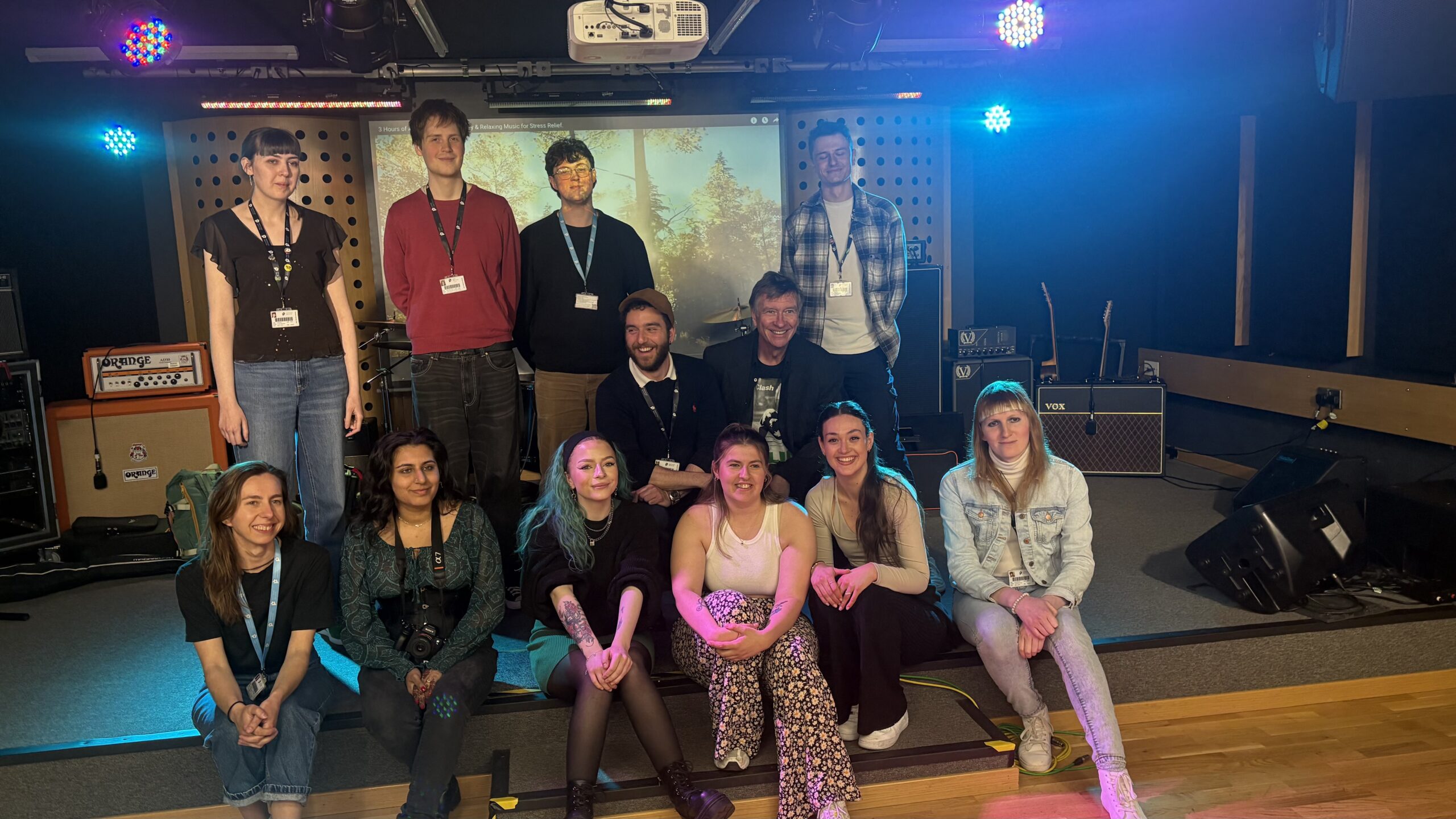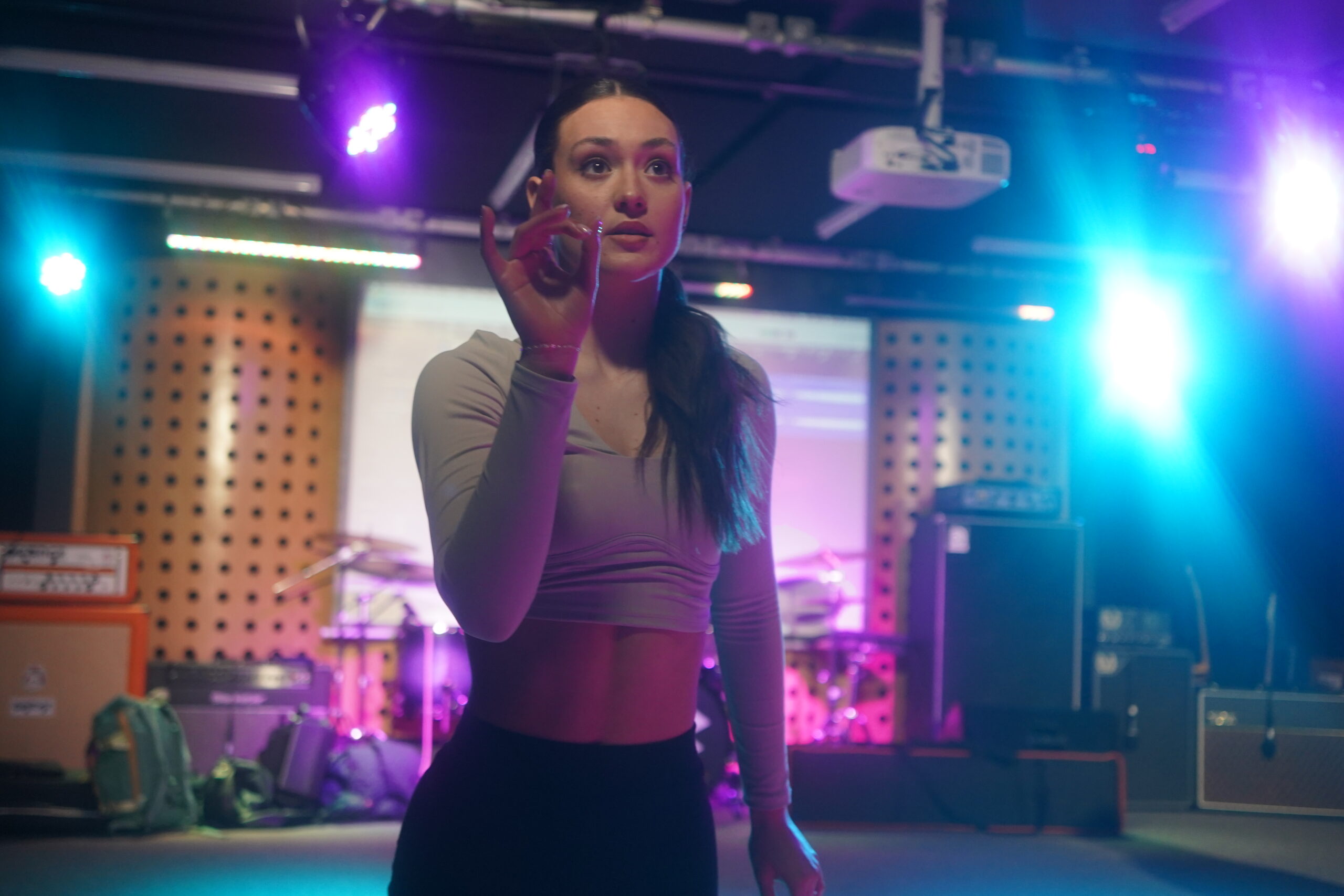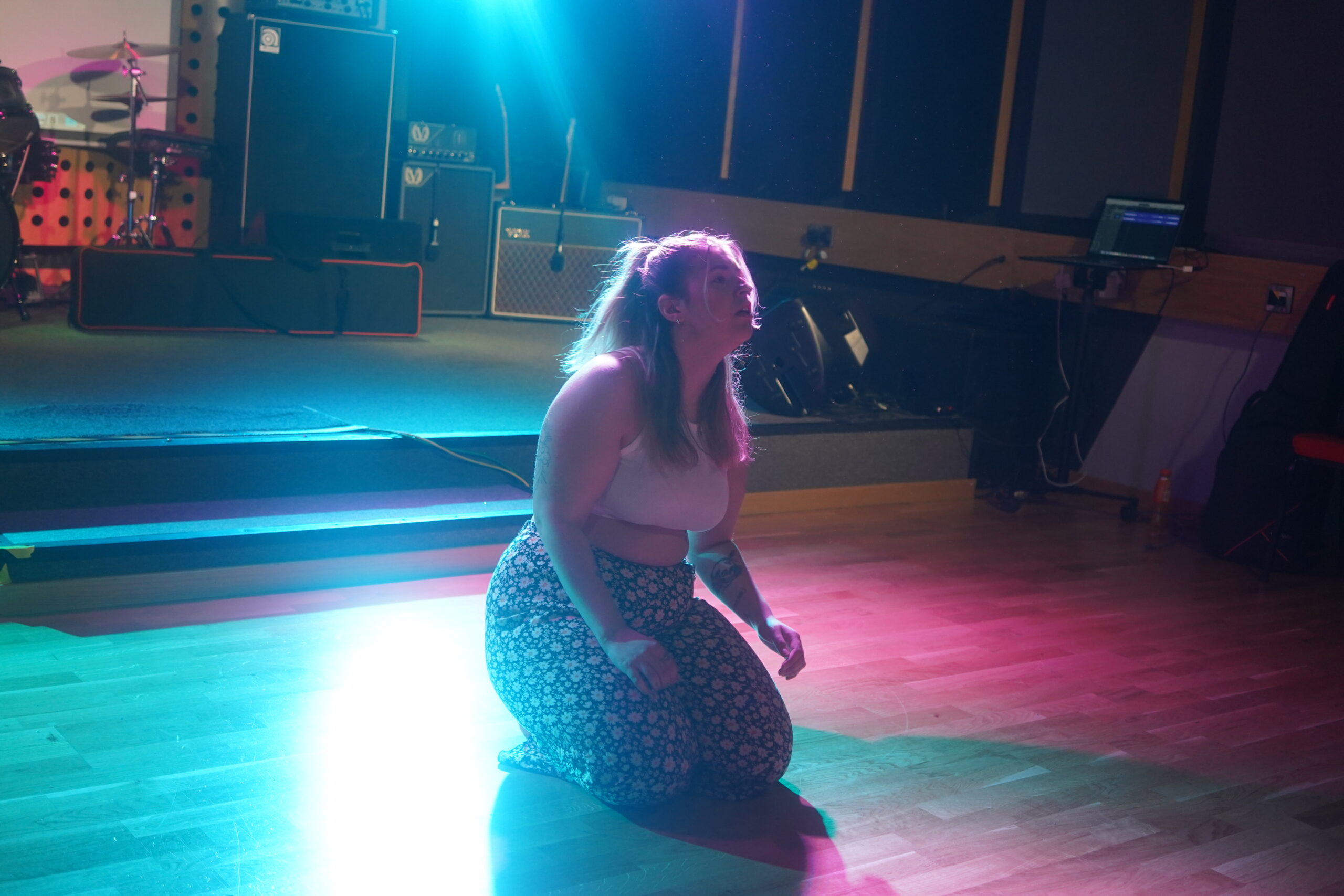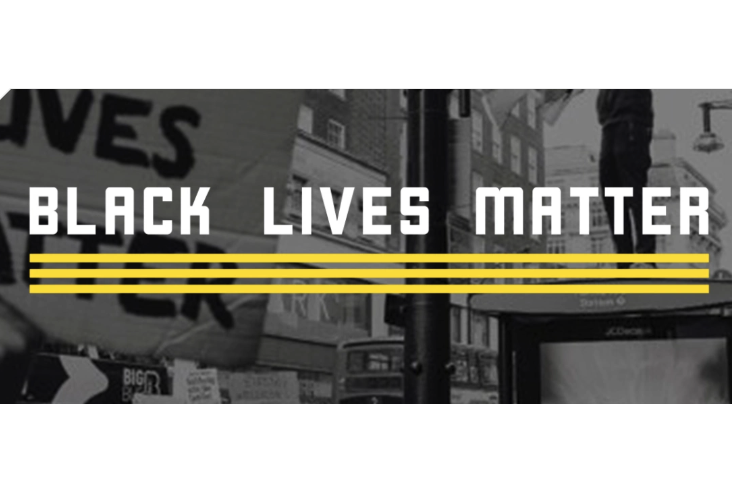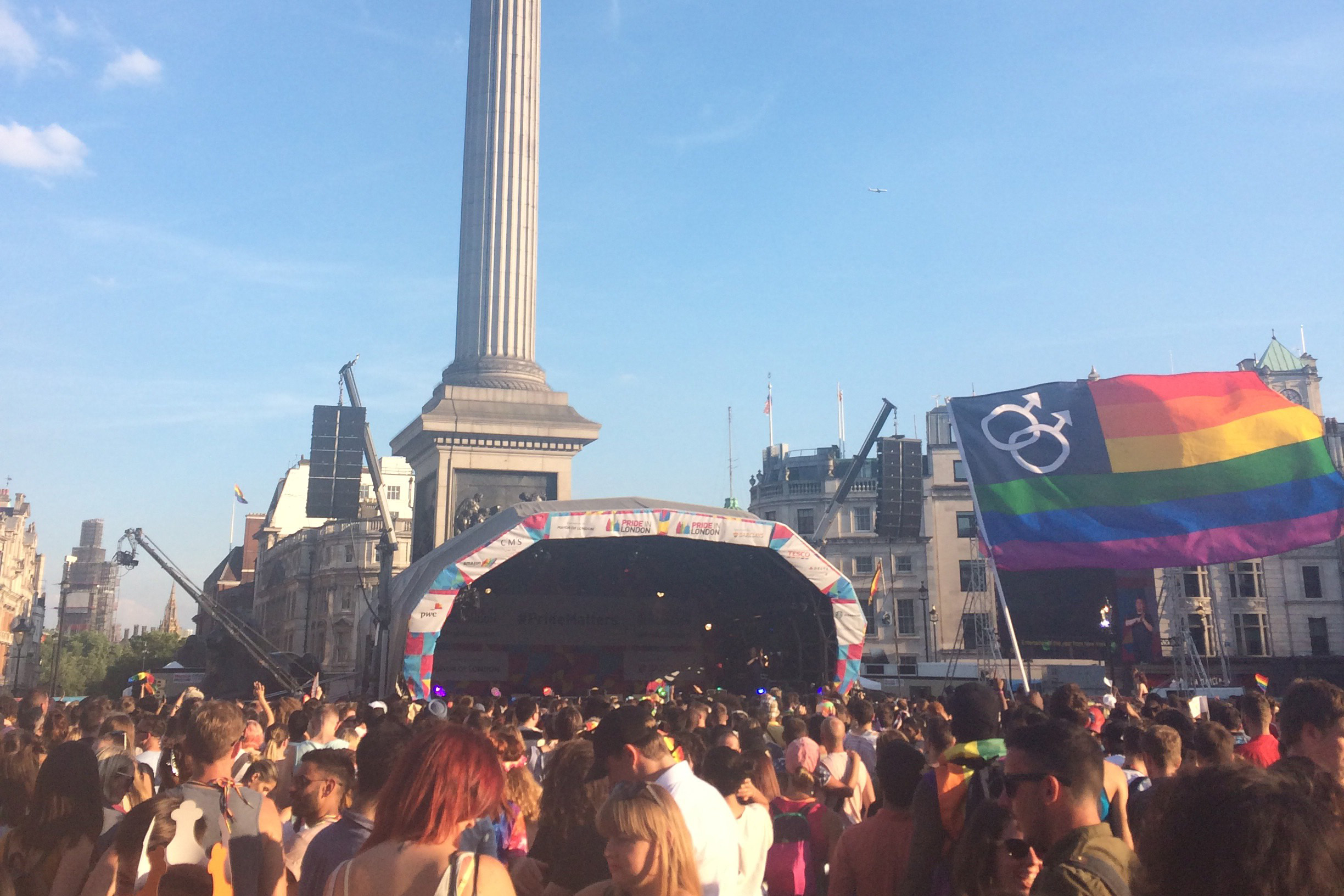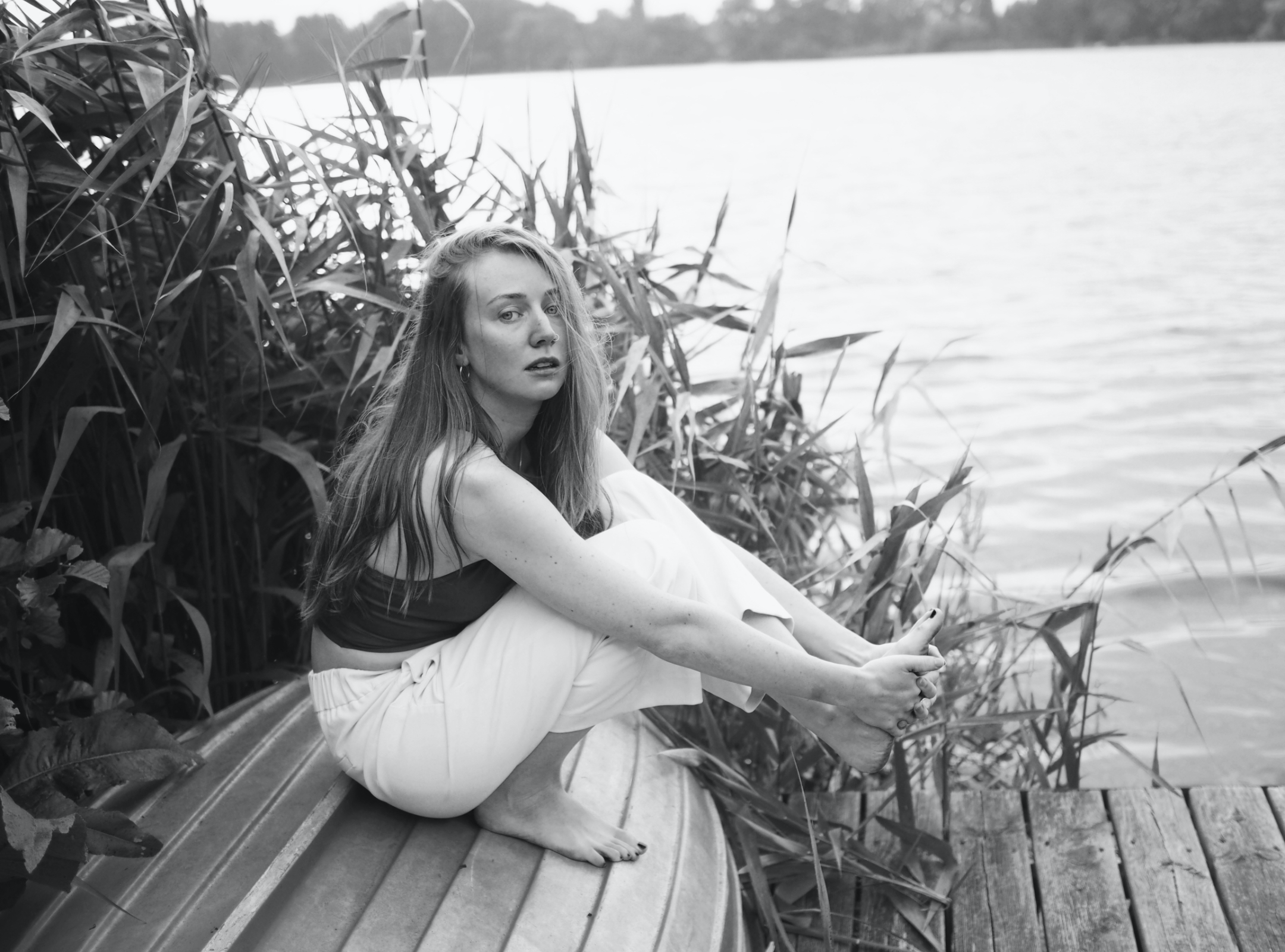Earlier this month, two MA Performing Arts students from Performers College took a trip to BIMM Institute Birmingham to join forces with the Popular Music Practice MA students for an exciting collaborative project. We caught up with Lucie Rowley and Hannah Cox, to find out more about their project, how the collaboration came together, and what they took away from the experience.
Tell us about the collaborative project and what it entailed?
Lucie: It actually began a few months ago, kind of quietly in the background. The whole idea was to contribute our skills as performing arts students to enhance the original compositions created by the music students at BIMM. So we choreographed pieces to their music – and their work was so good that it really made our job easier and inspired us from the get-go.
We were working on it alongside our regular modules, so it was a bit of a juggling act, but it felt really worthwhile. We kept in touch with the composers and updated them as our choreography progressed. Eventually, Paul Rogers (MA Popular Music Practice course leader) invited us to perform at their symposium. So myself, Hannah and our course leader Paul Saunders got the train up to Birmingham (on a lovely sunny day, which made it even better!) and we had such a good time. We met the music students, explored their exhibition stands (which were incredible!), and performed several times throughout the day. It was full-on, but really fulfilling.
Hannah: Yeah, I think we performed about four or five times in total. The day had this really nice energy to it – people were coming and going, popping into performances, chatting about the work. There was a proper creative buzz on campus.
How did the collaboration come together in the first place?
Hannah: It was set up by our course leader, Paul Saunders, who put us in touch with the music students. We all jumped on a video call with them at the start, just to get to know each other’s work. They played us their compositions, and we got to choose which ones we felt connected to, creatively.
It was a really open process. There were no strict rules, more like “Here’s the vibe – run with it!” So we each picked a piece that resonated with us and started choreographing. After that, we kept in touch through emails, checking in on how it was going. Then, a couple of weeks before the symposium, we had another call to update everyone on progress. That’s when they invited us to come and perform live. It felt like everything clicked into place really naturally.
What was your process like for creating and sharing the choreography?
Lucie: Once we had our music choices, I remember asking our collaborators if they had any specific ideas or storylines they wanted us to include. A few had some concepts in mind, but most of them just said, “We trust you- do your thing!” Which was really freeing, actually.
Hannah and I booked studio time and just started experimenting. We’d film what we created and upload it to a shared OneDrive folder, where both Pauls and the music students could watch and give feedback. We did that throughout the project – every time we updated or added to the piece, we’d upload it. They were great about it, super supportive. We didn’t get many change requests, just encouragement and the occasional comment like, “This bit’s amazing!” or “Could we try something a bit different here?”
By the end, it felt like we had developed something truly collaborative, even though it was all done remotely until the performance day. It came together very organically.
What impact did this experience have on your development as performers?
Hannah: It taught us so much, especially about communication and how to collaborate with other creatives. That’s something that’s so important in our industry – you’re always working with different people, across disciplines, and learning how to make that work is huge.
Also, the fact that we were only given the music – no set theme, no choreography brief – it pushed us to think differently. We had to interpret the mood and message from sound alone, which was really exciting but also a challenge. It’s rare to get that kind of creative freedom, and I feel like it helped me develop a more independent voice as a choreographer.
Lucie: Definitely. I loved working on it. Even though it was extracurricular, the music made it feel like a treat rather than an extra task. We could come back to it whenever we had space in our schedule, and every time we did, we got more inspired.
When we finally performed it live, it was amazing to connect with the composers and see how their vision translated through our choreography. We’d only really been given the titles – mine were Idea and Bloom – but those gave us so much creative scope. It pushed me to evolve my choreography and think more about how movement works on stage in a live setting. Just the experience of hopping on a train, going somewhere new, and getting stuck in – it’s something I’ll always remember.
How did it feel to finally perform the pieces live?
Hannah: It was honestly such a special moment. Knowing the composers were in the audience, watching us bring their music to life through dance, felt amazing. And hearing their reactions afterward, saying things like, “I never imagined it like that, but I love it”, it was so rewarding. It really made all the work worthwhile.
Lucie: For me, it was just a huge wave of pride. It’s such a passionate industry – we don’t just do this because it’s a job, we do it because we love it. The composers had poured their hearts into these pieces, and they trusted us to interpret that. That trust meant a lot. And to see it all come together, live and in person, after months of remote collaboration, it was magic. It reminded me why I love this industry so much.
Did you find value in collaborating with students from another discipline?
Hannah: It was so eye-opening. Even though our disciplines are different, there’s so much crossover in how we think and work. We had these great conversations about our research projects and how we each approach creative practice. It really broadened our perspectives and gave us a new appreciation for what goes into making music – any kind of art, really.
Lucie: Exactly. I spoke to one of the composers, Nicole, about her piece Bloom, and it was fascinating to hear about her process. It gave me a better understanding of how the music was composed, and in turn, that shaped how I choreographed to it. It felt like our ideas were weaving together into one shared story, even though we’d never met until the day of the performance.
When you’re in this world, you realise there’s so much depth to every creative choice. The more opportunities you have to collaborate across disciplines, the better you become as an artist.

Closing Thoughts
Hannah: Massive thanks to both Paul Rogers and Paul Saunders for bringing us all together and making the collaboration possible. They gave us the space and support to explore something new and really run with it.
Lucie: And of course, to the music students. They trusted us with their work, which is a big deal when you’ve spent so much time creating something so personal. I’m grateful they were open to letting us bring our own interpretations to their compositions.
Find out more about our postgraduate courses.
To discover more about Performers College, including auditions and how to apply, contact us at [email protected] or you can Apply Now, or book an Open Day on our Events page.
